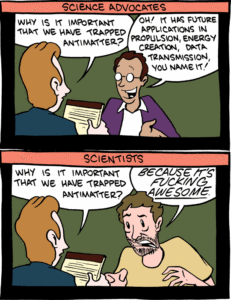For a century now, room-temperature superconductivity has been a wild dream in materials science. Superconductivity is the property of certain materials to let electric current flow through them without any resistance. That means no energy loss in electrical networks, no overheating, nothing. It sounds like a pretty good idea. But at the same time, it happens only at temperatures below -140°C. (It can still be of practical use, but superconductive things need to be accompanied by bulky cryogenic devices.) Given all this it’s obvious that superconductivity in warmer temperatures is kind of a holy grail.
Now it seems that some people did it but, as it happens with all granted wishes, one has to be careful of what precisely they wish for. Sure, you can have your room temperature. But you didn’t mean that you also wanted comfortable pressure, did you?
More specifically, a lab at the University of Rochester achieved superconductivity at an incredible 15°C – but they had to keep their material under a pressure close to that in Earth’s core. All this happened by squeezing a mix of carbon, hydrogen and sulfur between two diamond tips while hitting it with a laser beam. The high pressure restricted the tiny movements that atoms normally do, and so let the electrons of the current flow between them without any obstacles.
The next goal is to understand the structure of the superb material that formed between the diamonds, because under those conditions it couldn’t really be told. There is probably a long way to producing it or finding a practical way to use it, but nonetheless it was a big leap. Because, sure, better energy transfer, medical imaging, transport could come out of warm superconductivity. But still, one of its merits is being cool. (See comic below for an explanation.)

🌒
A few days ago, eighteen light-minutes from here, a bus-sized spacecraft took samples from an asteroid. NASA’s OSIRIS-Rex grazed asteroid Bennu with its robotic trunk and collected dirt and rocks that swirled off its surface. It will now bring them back to its mama planet, where it’s expected to return in three years’ time. It also took a small sweet video of all this.
🌓
Last month it was announced that a molecule called phosphene and associated with life was detected in the clouds of Venus. In the previous Ph-news we linked to a comic saying that this was expected, as 2020 could only finish with an alien invasion.
The truth is probably worse. 2020 can only finish with a big disappointment.
In the weeks since, several research teams have found various problems surrounding the finding and at this point it looks like there wasn’t any finding after all…
Some of the issues were about the way that the analysis of the data was done; others were about problems with the telescopes themselves; it was found that the same chemical “signatures” can be given off by another molecule; and to top it off, different signatures that phosphene can give are absent. And yes, the scientific method is usually frustrating like that.
🌔
But in a surprise move, phosphene and Venus are out, cyclopropenylide and Titan are in. Titan, Saturn’s largest moon, is one of the places most probable to host life in the solar system, either now or in the future: it’s almost certain that no sizable life is currently found on Titan, but it won’t be surprising if it is being slowly created within its methane lakes.
Now cyclopropenylide, a sassy molecule, was detected in its atmosphere. It reacts a lot with other substances and it is believed that it can act as one of the building blocks leading to bigger and more complex molecules, which can ultimately lead to biological ones.
Tune again in a month for more news, or check earlier for other Ph-posts!
